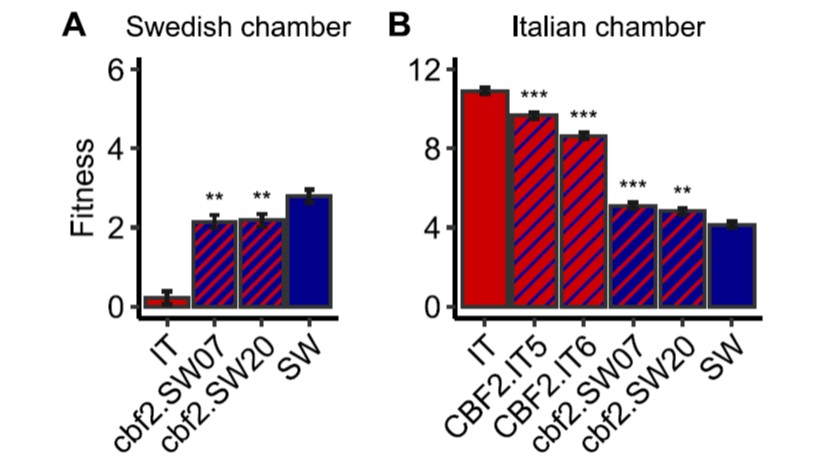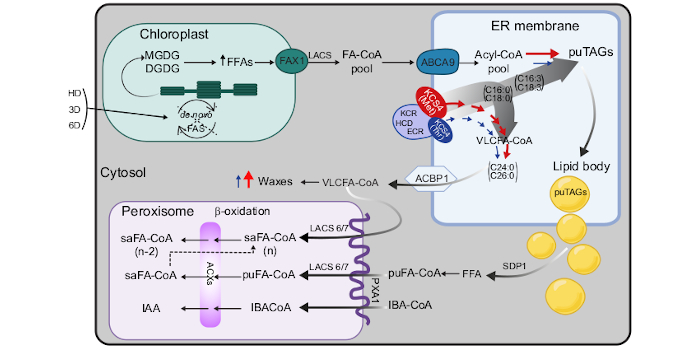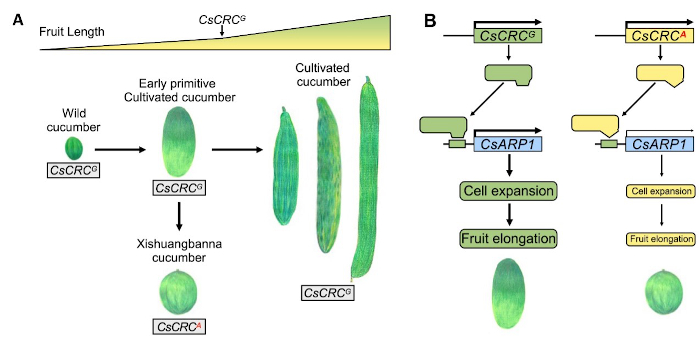
Arabidopsis long non-coding RNAs: an orchestrated hubbub
The Plant Cell: In a NutshellKornienko et al. discover that Arabidopsis genome is full of long-non-coding RNAs that show their expression only in specific tissues and plants from different geographic origins because of differences in epigenetic silencing of these genes.
Plant Cell - https://doi.org/10.1093/plcell/koad233
By Aleksandra…

A large effect genetic trade-off is caused by a single mutation in CBF2
Plant Science Research WeeklyUnderstanding the genetic basis of local adaptation of a species is an important but thorny problem. Now that whole genomes are readily characterized, it’s not hard to see lots of differences between populations, but pulling meaning and demonstrating functional consequences out of those differences…

The dark side of the plant: lipid metabolism regulation under starvation
The Plant Cell: In a NutshellLuzarowska et al. reveal that an enzyme involved in fatty acid elongation and wax synthesis determines the differential accumulation of polyunsaturated triacylglycerols.
By Corina Mariana Fusari1 & Yariv Brotman2
1Centro de Estudios Fotosintéticos y Bioquímicos (CEFOBI-CONICET-UNR), Suipacha…

CsCRC regulates cucumber fruit length
The Plant Cell: In a NutshellChe, Pan, Liu, Li et al. provide insight into fruit length variation in cucumber.
By Gen Chea,e, Yupeng Panb, Xiaolan Zhanga,*
aState Key Laboratories of Agrobiotechnology, Beijing Key Laboratory of Growth and Developmental Regulation for Protected Vegetable Crops, MOE Joint Laboratory for International…

Repeat yourself: A new way to self-express
The Plant Cell: In a NutshellReinar et al. uncover the effects of allelic variation in short tandem repeats across natural populations of Arabidopsis thaliana on gene expression.
By Kjetill Jakobsen1, Melinka Butenko2, and William Reinar1
1Centre for Ecological and Evolutionary Synthesis (CEES), University of Oslo, Department…

